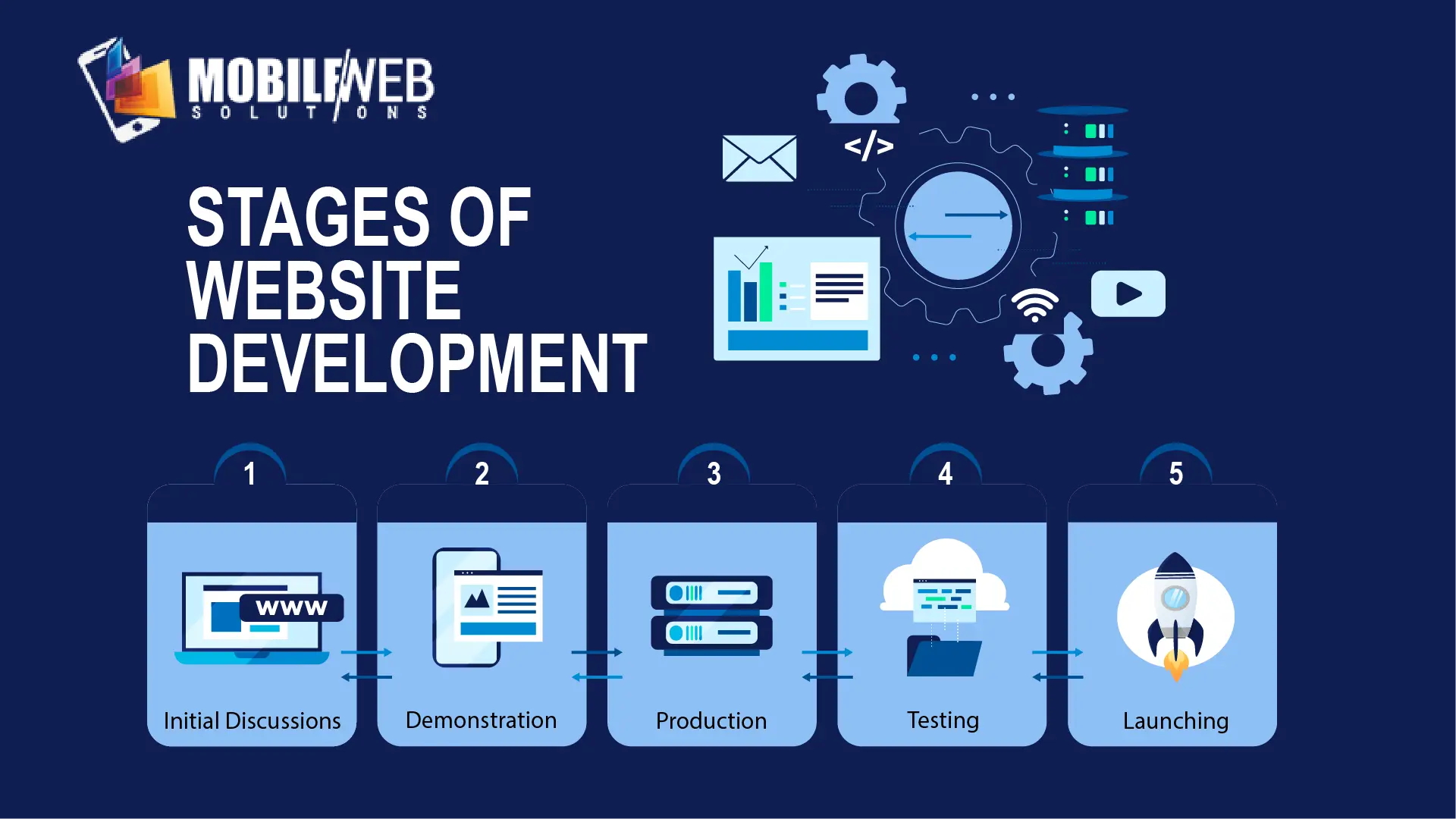The rapidly expanding discipline of web development significantly impacts how we engage with the internet. Web development is a broad field that includes various continually changing technologies and skills, from creating specific static web pages to creating complicated web apps.
Understanding the fundamentals of web development is crucial in today’s digital world, whether you’re a business owner trying to establish an online presence, a student thinking about a career in technology, or just someone interested in how websites are built.
Most companies in web development in the UK will examine these essential ideas, tools, and abilities you need to be familiar with to begin working on websites. If you are a beginner in this topic, read till the end to gain more knowledge.

What is web development?
Building, creating, and managing websites and web applications accessible online and through web browsers is known as web development. Web developers use a variety of programming languages, including HTML (Hyper Text Markup Language), CSS (Cascading Style Sheets), and JavaScript, to create websites and web apps.
Here, HTML and CSS structure and style web pages, while JavaScript is used to build and create user-friendly front-end functionality. Responsive web design has become crucial in creating websites and web apps. It guarantees that your websites and online apps function flawlessly on various gadgets and screen sizes.
According to calculations, more than 1.98 billion websites will be online by September 2022. And the number is predicted to increase more quickly in the upcoming days.
Why is Web Development Important?
Your website design and development are the essential elements that build brand visibility online. In the current digital age, web development is crucial because it greatly impacts your company. Depending on how you deliver the message to your audience, it might make or kill your business.
A website or web application with an online presence increases the likelihood of acquiring lifelong consumers. Web development aims to educate users about the goods or services you are providing and help them see why they should choose to use or purchase them over those of your rivals.
You won’t be able to keep your audience for long-term connections if you don’t go into web development for a website or web application. Because this is where you may connect with a large audience and maintain a long-term partnership, the significance of web development cannot be understated and must be taken into account. It would help if you strongly emphasize web development as a business owner.
Whether a consumer wants information or a business owner is interested in utilizing your service, your web application or website can attract many users. Web development and design draw in the audience and convert them into paying clients.
To construct a website that may meet your consumers’ needs, you must consider every aspect of your customers, including bottlenecks, issues, features, and solutions. Also possible with web development are:
- Engage with your clients and respond to their questions quickly.
- Pay attention to what your customers want.
- Increase sales by increasing site traffic with engaging web design and development.
- Create a user-friendly website that is straightforward to explore.
- Assist you in staying current with the newest marketing trends and techniques,
- establishing the professionalism and identity of your business.
Different types of web development
There are several forms of development that developers specialize in. Some website developers focus on the user interface, some work on the functionality-related underpinning code, and some work on every aspect of a website.
Web developers of all stripes focus on various facets of development, but they all share one thing: code. Various forms of web development include the following:
- Front-end development: To enable users to view and interact with a website, front-end development entails designing user interface using HTML, CSS, and JavaScript.
- Back-end development: This technique concentrates on the parts of a website you cannot view and entails writing server-side software.
- Full-stack development: In full-stack development, the front-end and back-end components of the web application are both built.
- Website development: Creating, constructing, and maintaining a website is called development.
- Desktop development: Building, designing, and managing a website that works on desktops is called desktop development. It concentrates on creating software for the three most widely used os, Windows, Linux, and macOS.
- Mobile development: Building, constructing, and maintaining a website that functions on mobile devices is called mobile development.
- Game development: Designing and building games for desktops, online, and mobile devices is the practice of game development.
Embedded development: Developing software for flight controllers, drones, medical devices, and other embedded systems using computer programming languages like C and C++ is called embedded development.
Stages of website development

Stage 1:
The most enjoyable aspect is the creation process. Initial discussions regarding color schemes, functionality, unique features (such as eCommerce), graphics, movies, and the website’s general appearance may be held with the client. Every time, the creative team advises customers to attend the meeting with a few examples of websites they appreciate. After the discussion, the team of designers takes some time to create a 2D rendering of the concept.
Stage 2:
It’s time to show the client the website after the team has given the design some thought. Usually, the demonstration takes place in person. More discussion of the design, colors, and other specifics occurs now. More meetings will likely be because the client’s feedback will necessitate changes.
Stage 3:
The website should be sent to the developer as soon as the design is accepted. On a production server, the developer starts constructing the website so the client may view it online while making it public. The creative team typically utilizes this time to collaborate with a writer for copy and with other business teams to polish the website’s voice, content, and aesthetics. The phase is typically the most time-consuming part of the process, but it’s also the most important!
Stage 4:
Testing the newly created website on the test server should occur after the programmer completes the coding while the client has chosen all the content. The website’s URL is delivered to the client, and clients can share it with who so ever they want to, including their coworkers or higher management. Clients can ask for edits or changes if they feel like it.
Stage 5:
The redesigned website can now be viewed online at last! Once the client approves, the developer will start the launch process. This phase entails acquiring the domain and setting up website hosting. Additionally, propagation will take some time.
Types Of Web Development Languages
It’s more than just about the design; it’s regarding what the user sees while creating a website. A lot goes behind the scenes of a modern website in real. With such abilities, developers can navigate any environment:
Client-side scripting
“client-side scripting” means scripting languages such as JavaScript, CSS, and HTML to design a website’s look, feel, and organization. Creating web applications running in a website browser is also included. Languages used for client-side scripting include:
- HTML
- CSS
- JavaScript
- jQuery
Server-side scripting
When creating a website’s back end, web developers use server-side scripting. It involves creating the framework for the website’s database and web browser to communicate. By integrating scripts into your website, the interface connection is made possible. These scripts will show information or visuals in response to user input. The following languages are crucial for server-side scripting:
- ASP
- C
- Java
- PHP
- Python
- Ruby
Database engineering
Websites that store images, code, files, and other data need a database. A skilled web developer will be familiar with relational database management systems, or RDBMS. For web-based apps, popular RDBMS include:
- Oracle
- MySQL
- Microsoft SQL Server
- Apache
- IBM DB2
- MongoDB
In Short:
To sum up, web development is a fascinating and constantly changing area that requires a blend of technical expertise, creative thinking, and problem-solving capabilities. Anyone interested in a career in web development must have a firm grasp of the fundamentals of HTML, CSS, and JavaScript.
However, numerous other crucial ideas and technologies exist to consider, such as responsive design, web accessibility, and back-end development. Anyone can develop their web development skills with the right tools and a dedication to lifelong learning, helping to produce dynamic and interesting online experiences.
The key to the success of a web development company, whether creating your website or working with a team to create a sophisticated online application, is understanding the foundations and being up to date with the newest trends and technology.
FAQs
What do you need to know for web development?
To work as a web developer, you need to be familiar with HTML, CSS, and JavaScript. You can communicate with computer languages by developing these core web development abilities, which will provide the framework and reasoning for doing so.
What skills must web developers know?
What a web developer needs to know? The fundamentals of HTML, JavaScript, and CSS for the front end, and PHP or Node.js for the back end, should be known by any web developer. These fundamental skills for web development will give you the foundation and logic needed to interact with computer languages.
What are the 3 basics of web development?
The following three principles of web development:
- Web pages are typically created using HTML (Hypertext Markup Language), a markup language. It offers the framework and information of a web page, such as text, pictures, videos, links, and other components.
- CSS (Cascading Style Sheets) is a programming language for creating style sheets that specify how a web page is presented, including the layout, color, font, and other visual components. It is used to divide a web page’s design from its content.
- JavaScript: Web pages may be interactive and dynamic using JavaScript. It provides a web page with more functionality, like form confirmation, films with animations, and dynamic updates.




